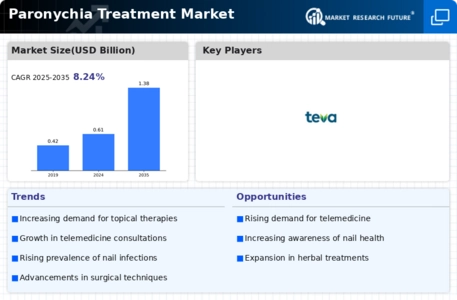Market Share
Paronychia treatment Market Share Analysis
To stay competitive in the Paronychia Treatment Market, companies need effective strategies for market share positioning in order to be able to secure a significant portion of the market. Product differentiation through innovation is one of the key approaches companies use to take up dominant positions within the market. Strategic alliances or collaborations play a vital role in gaining more leads into new markets while trying to get a share with other firms dealing with similar products like Paronychia drugs around the world. It will simply not be possible for us to sustain our positions unless we work together since this kind of partnership can lead to shared resources, which assist in speeding up the product development process and eventually enhance larger market access, thereby making any company stronger enough so as it captures more shares on the global scale than before. Conversely, aggressive marketing tactics have been used extensively, such as strategic pricing mechanisms or aggressive distribution channels, to increase product visibility and enhance accessibility. The Paronychia treatment market is a field where acquisitions and mergers represent significant strategies of positioning in terms of market share. Companies may gain or merge with others to strengthen their product portfolio, gain access to new technologies, and expand the market. Expansion on a global scale is one of the approaches that companies employ strategically to increase their market share by entering new geographical regions. This approach requires modification of products and marketing strategies to meet specific needs as well as regulatory requirements for different markets. Customer relationships and satisfaction are necessary for successful positioning in the paronychia treatment market regarding market share. In this case, firms adopt various methods aimed at building strong connections with healthcare providers, institutions, and patients, such as providing excellent customer services, reliable product supply, and educational support. Positive customer experience can result in brand loyalty, leading to repeat purchase behavior and positive word-of-mouth, all contributing towards increased market coverage.




Leave a Comment